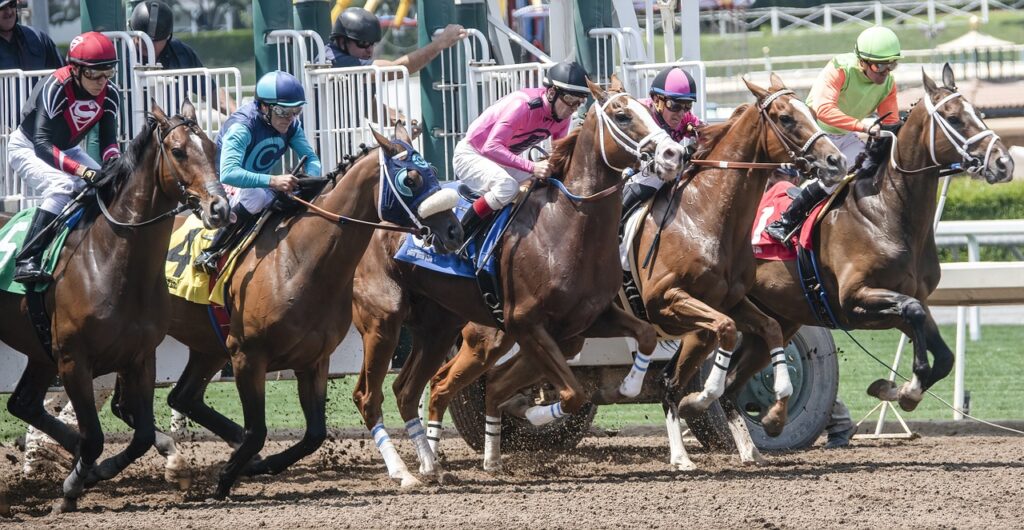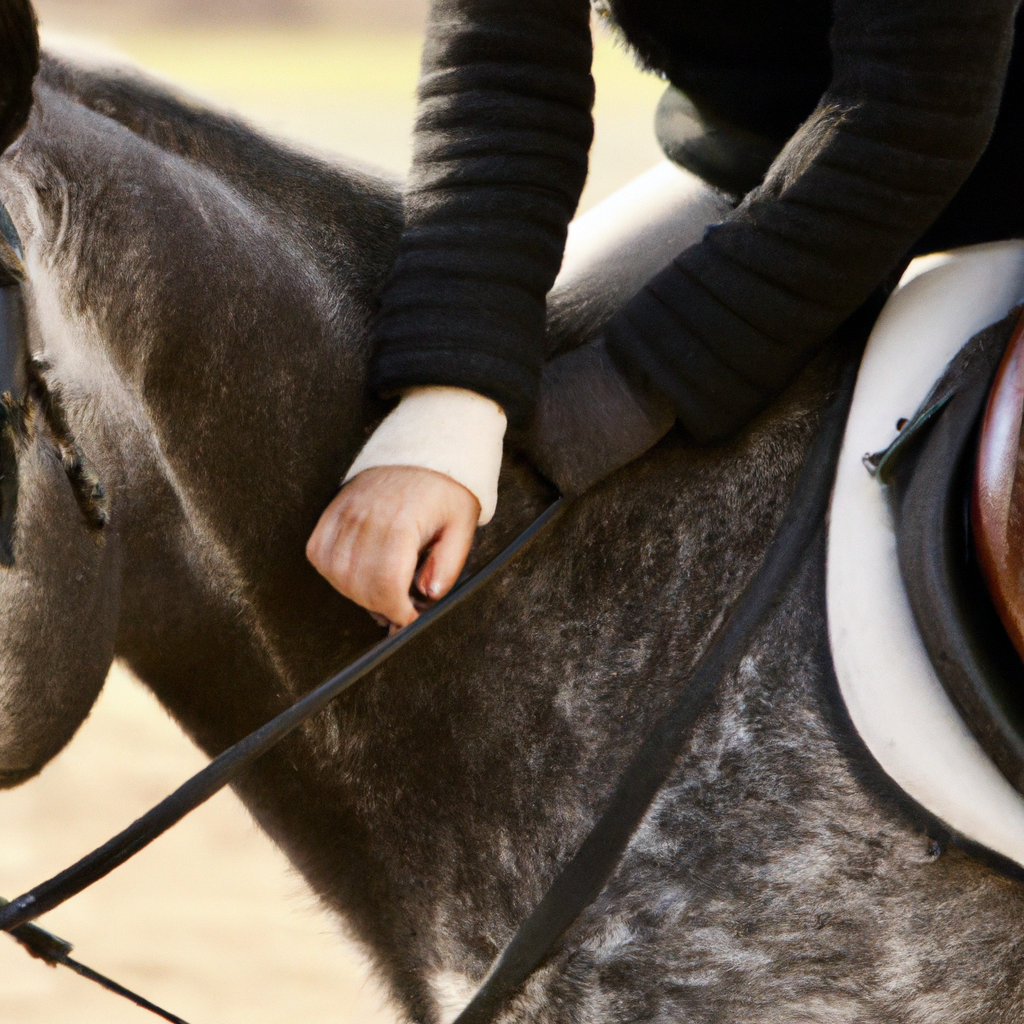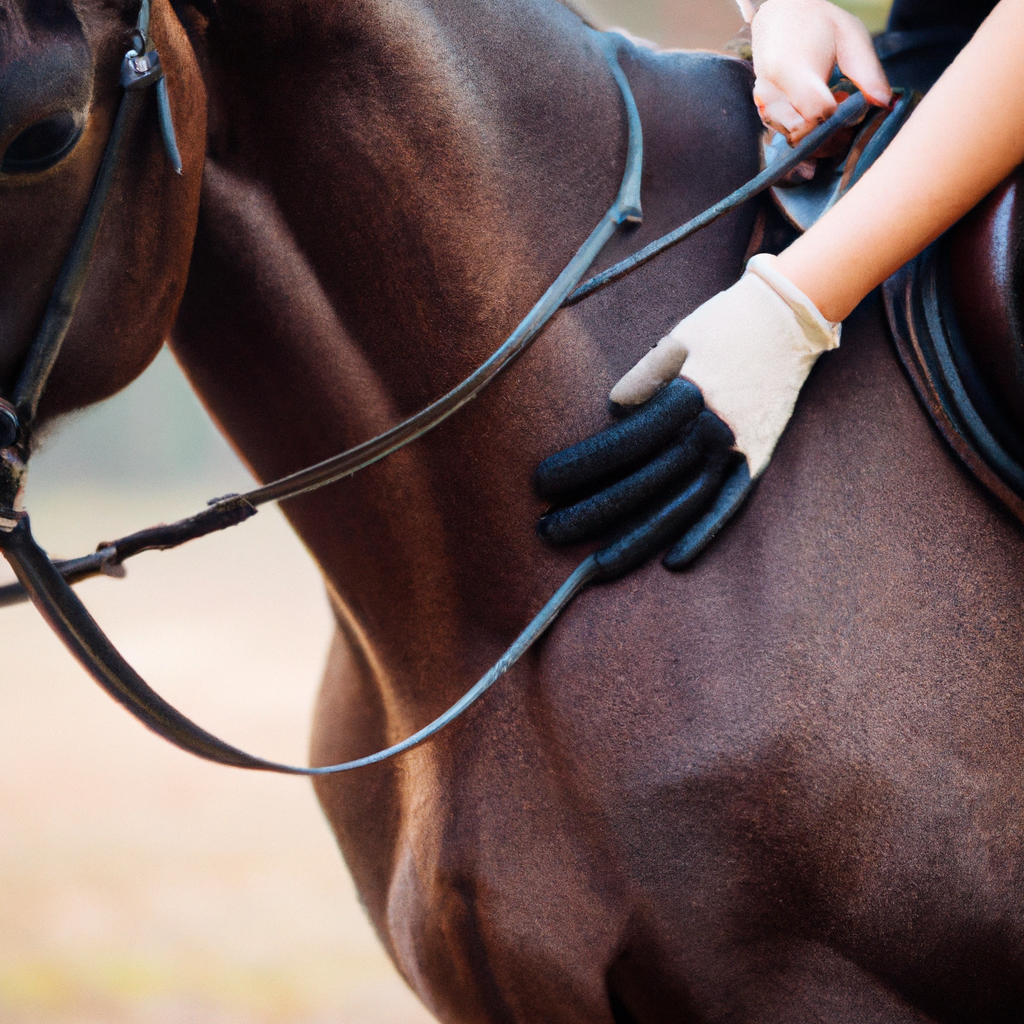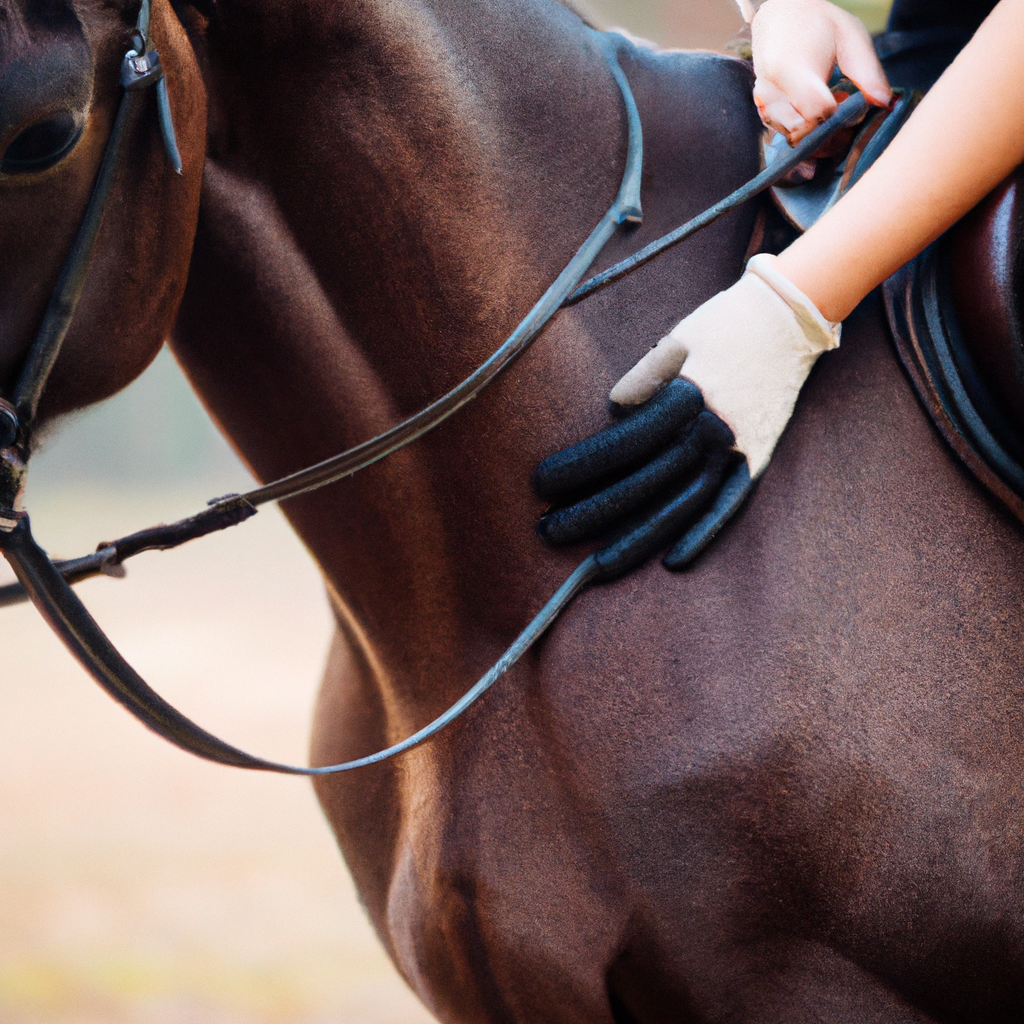Imagine the wind in your hair, the rhythmic sound of hooves hitting the ground, and the exhilarating feeling as you gallop through open fields. Horseback riding is not only a thrilling adventure but also a beautiful way to connect with nature and these majestic animals. From the moment you mount your horse, a sense of freedom and tranquility washes over you, transporting you to a different world where worries melt away and the only thing that matters is the bond between you and your steed. Whether you are an experienced rider or a beginner, the joy of horseback riding is an experience like no other.
Benefits of Horseback Riding
Horseback riding not only brings a sense of joy and adventure into your life but also offers a range of physical, mental, and emotional benefits. It is a fantastic way to stay active, build strength and flexibility, and improve your posture and balance. Moreover, horseback riding provides an opportunity to develop self-confidence, improve focus and concentration, as well as reduce stress and anxiety. In this article, we will explore the many benefits of horseback riding and guide you on how to get started, choose the right gear, and build a strong connection with these majestic animals.
Physical Benefits
Engaging in horseback riding is an excellent way to get in shape and improve your overall physical fitness. While riding, your body goes through various movements that help to strengthen your core, back, and leg muscles. Balancing on the horse also promotes better posture and enhances stability. Additionally, riding requires coordination and control, which contributes to enhancing your reflexes and fine motor skills. The physical demands of horseback riding help to burn calories and increase cardiovascular endurance, making it a fun and enjoyable form of exercise.

Mental and Emotional Benefits
Horseback riding offers numerous mental and emotional benefits that can enhance your overall well-being. Spending time with horses can be calming and therapeutic, allowing you to connect with nature and escape from the stresses of daily life. Interacting with these intelligent creatures promotes the release of endorphins, which are known as the “feel-good” hormones, thus reducing stress and anxiety. Horseback riding also helps to improve focus, concentration, and mindfulness, as it requires you to be fully present and engaged with the horse. The bond formed between rider and horse can create a sense of companionship, boosting your self-esteem and providing a source of emotional support.
Getting Started with Horseback Riding
Before you embark on your horseback riding journey, it’s essential to ensure you have the necessary knowledge and skills. Below are some crucial steps to get you started on the right hoof:
Choosing the Right Riding Stable
Finding the right riding stable is paramount to your horseback riding experience. Look for a stable that provides well-trained horses, experienced instructors, and a safe and welcoming environment. Research local stables, read reviews, and visit them in person to observe their facilities and staff. Taking the time to choose the right stable will ensure that you receive proper instruction and have a positive experience.
Taking Riding Lessons
Enrolling in riding lessons is the best way to learn horseback riding from qualified instructors. Lessons will teach you the fundamental skills, such as mounting, dismounting, steering, and maintaining balance. Experienced instructors will guide you through various exercises and techniques to help you progress at your own pace. Riding lessons also provide an opportunity to learn about horse care, grooming, and stable management. By taking lessons, you can build a strong foundation and develop good riding habits from the start.
Getting to Know Horses
Horses are magnificent animals with distinct personalities. It’s crucial to spend time getting to know horses and understanding their language. Approach horses calmly, respecting their personal space, and allowing them to approach you. Learn about their body language, gestures, and vocalizations to establish trust and create a harmonious connection. Spending time with horses outside of lessons, observing their behavior, and participating in activities like grooming will deepen your understanding of these beautiful creatures.

Essential Riding Gear
To ensure your safety and comfort while horseback riding, it’s essential to have the right riding gear. The following items are considered indispensable for any rider:
Riding Helmet
A properly fitting riding helmet is the most crucial piece of safety equipment you should always wear when horseback riding. Helmets protect against head injuries and should meet the necessary safety standards. Find a reputable equestrian store to have your helmet fitted professionally, as proper fit is vital for optimal safety.
Riding Boots
Investing in a pair of sturdy riding boots is essential for proper foot placement and stability in the stirrups. Riding boots should have a heel and a non-slip sole to prevent your foot from sliding forward or getting tangled. They also provide protection and support to your feet and ankles while riding.
Breeches or Jodhpurs
Breeches or jodhpurs are specially designed riding pants that provide comfort and flexibility in the saddle. These pants have a reinforced knee area to prevent chafing and allow for easy movement while riding. It’s recommended to choose breeches or jodhpurs made from breathable and stretchable fabric for maximum comfort.
Safety Equipment
In addition to a riding helmet, there are other safety equipment options you may consider, based on your riding style and preferences. These may include body protectors, riding gloves, and a safety vest. Consult with your instructor or a knowledgeable equestrian retailer to determine the appropriate safety equipment for your specific needs.
Different Riding Styles and Disciplines
Horseback riding encompasses a variety of styles and disciplines, each with its unique techniques, equipment, and competitions. Familiarizing yourself with different riding styles will broaden your horizons and enable you to explore various disciplines. Here are some popular riding styles to consider:
Western Riding
Western riding originated from the traditions of the American cowboy and is known for its relaxed, comfortable style. Western riders use a longer, looser rein and often ride with one hand. The attire typically includes a cowboy hat, jeans, and a western-style saddle. Western riding disciplines include reining, cutting, and barrel racing.
English Riding
English riding is known for its elegance and precision. The rider uses two hands, a shorter rein, and a lighter contact with the horse’s mouth. English riding disciplines include dressage, jumping, and eventing. The attire typically consists of a helmet, breeches or jodhpurs, tall boots, and a fitted saddle.
Dressage
Dressage is a discipline that focuses on developing the horse’s natural movement and obedience. It involves a series of intricate movements performed in harmony between horse and rider. Dressage riders aim for balance, suppleness, and precision. The dressage attire is formal and includes a shadbelly coat, white breeches, tall boots, and a top hat or helmet.
Jumping
Jumping is an exhilarating discipline that involves clearing various obstacles, such as fences and walls, at speed. Jumping requires a combination of skill, timing, and trust between horse and rider. Riders wear a helmet, show jacket, breeches, tall boots, and use a forward-seat saddle.
Trail Riding
Trail riding offers a chance to explore nature and enjoy the beauty of the outdoors while on horseback. It involves riding on trails, through forests, and along scenic routes. Trail riding can be a leisurely activity or a more adventurous experience, depending on the terrain and pace. Riders should wear appropriate attire for the weather and bring along essentials such as a water bottle, map, and first aid kit.

Building a Connection with the Horse
Building a strong connection with your horse is essential to create a trusting and harmonious partnership. The following activities can help foster a deep bond and understanding between you and your equine companion:
Grooming
Grooming your horse is not only a necessary part of horse care but also a valuable bonding experience. Regular grooming sessions provide an opportunity to relax, observe, and communicate with your horse. Use a soft brush to remove dirt and debris from the horse’s coat, and take time to gently massage their muscles and check for any signs of discomfort or injury. Grooming sessions also help to maintain a healthy coat and skin for the horse.
Groundwork
Groundwork involves working with your horse from the ground, establishing trust, obedience, and respect. It includes activities such as leading, lunging, and desensitizing exercises. Groundwork allows you to communicate with your horse using body language and voice cues, building a solid foundation for riding. Through groundwork, you can establish yourself as a confident and trusted leader in your horse’s eyes.
Bonding Exercises
Engaging in bonding exercises helps to strengthen the connection between you and your horse. These exercises can include activities such as liberty work, where the horse is free to move and respond to your cues without any physical restraints. Bonding exercises also involve spending quality time together, engaging in mutual grooming, and sharing positive experiences through training and play. These activities foster a sense of mutual respect, understanding, and trust, strengthening the bond between horse and rider.
Improving Riding Skills
Horseback riding is a skill that requires constant practice and improvement. Here are some key areas to focus on to enhance your riding skills:
Developing Proper Balance and Posture
Balance and posture are crucial for effective riding. Maintaining a correct position allows you to communicate clearly with your horse and maintain stability in the saddle. Engage your core muscles, sit upright, and align your ear, shoulder, hip, and heel in a straight line. Regular exercises, such as practicing two-point position or riding without stirrups, can help improve balance and strengthen your core muscles.
Mastering Different Gaits
Understanding and mastering different gaits is essential for controlling your horse and riding comfortably. Walk, trot, canter, and gallop are the basic gaits, each requiring specific techniques from the rider. Practice transitioning smoothly between gaits, maintaining a consistent rhythm, and adjusting your body position accordingly. With practice, you will develop a better sense of timing and coordination in sync with your horse’s movements.
Understanding Rein Aids and Leg Cues
Proper use of rein aids and leg cues is vital for communicating your intentions to the horse. Reins are used to signal direction and speed, while leg cues guide the horse’s movements and encourage engagement. Learn and practice different rein aids, such as direct rein, indirect rein, and opening rein, to effectively communicate with your horse. Leg cues, such as squeezing or kicking with your legs, can be used to ask for forward movement or lateral movements. Understanding and applying these aids correctly will enhance your control and communication with your horse.

Exploring the Great Outdoors on Horseback
One of the greatest joys of horseback riding is the opportunity to explore the great outdoors. Riding in nature allows you to appreciate the beauty of your surroundings, experience a sense of freedom, and connect with the environment. Here are some benefits and tips for enjoying nature while on horseback:
Enjoying Nature
Horseback riding allows you to access areas that may be inaccessible by other means, such as remote trails or beautiful countryside. Riding through forests, fields, or along rivers immerses you in nature, providing a unique perspective and a deeper appreciation for the natural world. Take the time to enjoy the sights, sounds, and scents of the environment while being mindful of preserving its beauty for future riders.
Sightseeing and Discovery
Horseback riding offers an excellent way to explore new areas and discover hidden gems. Whether you’re riding in a local park or embarking on a trail riding adventure, keep an eye out for landmarks, wildlife, and points of interest. Riding allows you to experience the landscape in a more intimate and immersive way, making each journey a memorable and enriching experience.
Trail Riding Tips and Etiquette
When embarking on a trail ride, it’s important to be mindful of trail etiquette and safety. Always follow established trails, respect any rules or regulations in place, and be considerate of other trail users. Maintain a safe distance from pedestrians, cyclists, or other riders, and announce your presence when approaching or passing others. Be aware of your horse’s behavior and any potential hazards on the trail, such as low branches or uneven terrain. Packing essentials like water, a map, and a first aid kit is also recommended to ensure a safe and enjoyable ride.
Competing in Horse Shows and Events
For those seeking a more competitive experience, participating in horse shows and events can be a thrilling endeavor. Here are some essential steps to help you prepare for competitions:
Choosing the Right Competition
There are various types of horse shows and events, each catering to different disciplines and skill levels. Before selecting a competition, consider your riding discipline, level of experience, and personal goals. Research local shows, talk to your instructor or fellow riders, and attend competitions as a spectator to get a feel for the atmosphere and requirements of different events. Choosing the right competition will ensure that you have a positive and rewarding experience.
Preparing for Shows
Preparing yourself and your horse for a competition requires careful planning and practice. Develop a training schedule leading up to the event, focusing on the specific skills and exercises required for your chosen discipline. Practice the required patterns or movements, set achievable goals, and seek guidance from your instructor to fine-tune your performance. It’s also essential to familiarize your horse with the show environment, such as trailers, arenas, and other horses. Exposure to different settings will help your horse adapt and perform their best on the day of the competition.
Getting Show-Ready
On the day of the competition, ensure you and your horse are well-prepared for the event. Arrive at the show venue with ample time to settle in, warm up, and mentally prepare yourself and your horse. Double-check your equipment and attire to ensure everything is clean, functional, and complies with competition regulations. Keep yourself hydrated, eat nutritious food, and practice relaxation techniques to manage pre-show nerves. Remember to stay positive, focus on enjoying the experience, and embrace the opportunity to showcase your skills and hard work.

Health and Safety Precautions
Taking care of your health and ensuring your safety should always be a priority while horseback riding. Here are some important precautions to consider:
Warm-Up and Cool-Down Exercises
Before and after riding, it’s crucial to warm up and cool down your muscles to prevent injury and promote flexibility. Perform simple stretching exercises to loosen your muscles and joints, focusing on areas such as your legs, back, and shoulders. After riding, take the time to cool down by walking your horse, allowing their muscles to gradually relax and recover. Practicing these exercises can help prevent muscle soreness and stiffness.
Proper Handling and Grooming Techniques
When handling horses, always prioritize safety for both yourself and the horse. Approach the horse calmly and confidently, avoiding sudden movements or loud noises that may startle them. When grooming, be aware of the horse’s body language and respond to any signs of discomfort or agitation. Use proper techniques when leading, tying, or working around horses to minimize the risk of accidents or injuries.
Tack Maintenance and Inspection
Regularly inspecting and maintaining your tack (equipment used for riding and handling horses) is crucial for both safety and horse comfort. Check your saddle, bridle, girth, and other equipment for any signs of wear and tear, such as loose stitching or broken parts. Clean and condition your tack regularly to prolong its lifespan and ensure its functionality. Professional tack specialists can provide guidance on proper maintenance techniques and help with any necessary repairs.
The Bond Between Horse and Rider
Beyond the practical benefits and skills gained, horseback riding fosters a deep emotional and therapeutic bond between horse and rider. Here are some remarkable aspects of this special connection:
Trust and Communication
Building trust is the cornerstone of any successful partnership between a horse and rider. Horses are sensitive creatures that respond to subtle cues and the energy emitted by humans. By communicating effectively and developing trust, you and your horse can overcome challenges and achieve remarkable feats together. Trust is established through consistent, fair, and compassionate handling, while communication is enhanced through body language, voice cues, and the building of a shared language.
The Therapeutic Aspect
Horseback riding is widely recognized for its therapeutic benefits, particularly for individuals with physical, cognitive, or emotional challenges. The movement of the horse replicates the human gait, providing riders with a sense of rhythm and balance. The bond formed with the horse can boost self-esteem, improve motor skills, and enhance emotional well-being. Equine-assisted therapy programs have also proven effective in helping individuals overcome trauma, anxiety, and communication difficulties.
Building Confidence and Self-Esteem
Horseback riding offers an empowering experience that can lead to increased confidence and self-esteem. The ability to train, control, and connect with a thousand-pound animal instills a sense of accomplishment and self-belief. Riders develop problem-solving skills, resilience, and perseverance as they face challenges and overcome obstacles. The trusting bond created between horse and rider becomes a source of inner strength and personal growth, both in and out of the saddle.
In conclusion, horseback riding is a rewarding and enriching activity that brings numerous physical, mental, and emotional benefits. From improving fitness and balance to fostering a deep bond with horses, this equestrian pursuit offers a wide range of experiences and opportunities. By getting started with proper training, acquiring the necessary riding gear, and exploring different disciplines, you can embark on a lifelong journey filled with joy, growth, and endless adventures on horseback. So grab your helmet, saddle up, and let the magic of horseback riding unfold before you.
